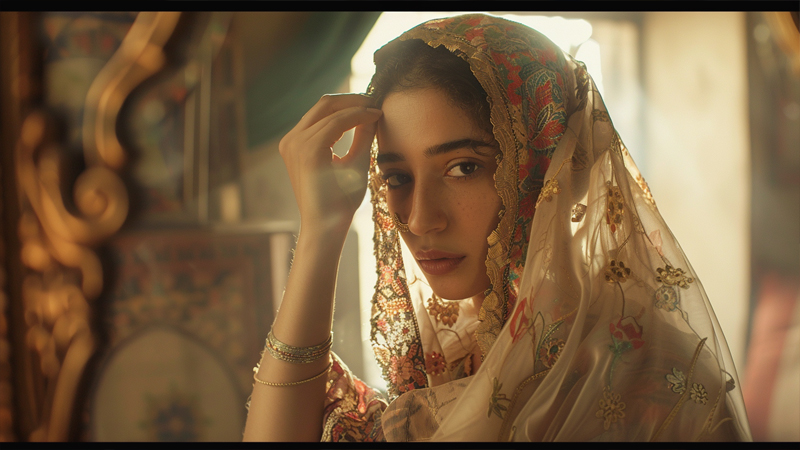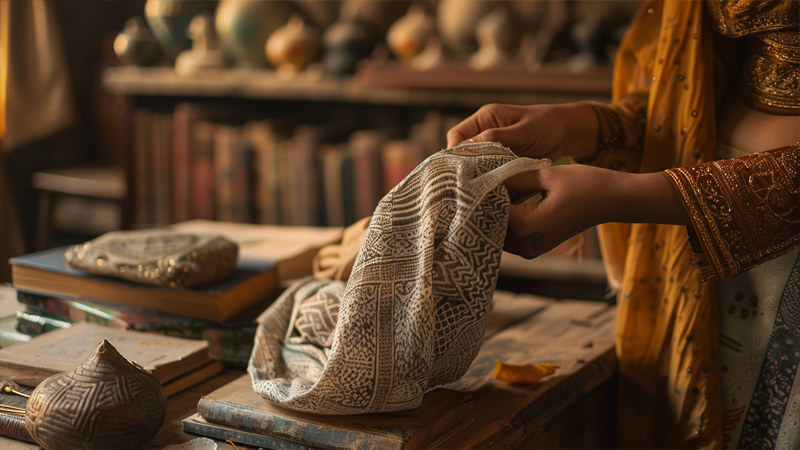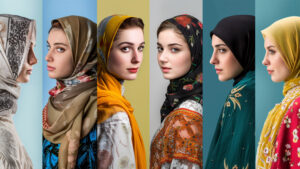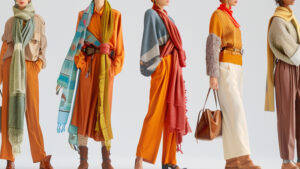
I’ve always been curious about how personal fashion choices can intersect with culture and identity.
Wearing a head scarf as a non-Muslim isn’t automatically racist, but motives, context, and respect are crucial. Understanding perspectives helps prevent unintended offense.
It’s worth digging deeper into the layers beneath our choices.
How do intent and context play roles in the perception of wearing a hijab as a non-Muslim?
Intent can determine whether your actions feel genuine or careless.
When respect and thoughtfulness guide your choice, it’s more likely seen as appreciation instead of ignorance.

I remember the first time I wore a head scarf purely because I loved the look. Later, a friend gently explained that for some, the hijab goes beyond fashion—it represents faith, tradition, and identity. That talk made me realize that even if I meant well, wearing a hijab1 without understanding its significance could be taken out of context. Sometimes people see a non-Muslim2 adopting religious clothing and wonder if it’s a costume or a true attempt to connect with the culture.
Seeing Through Different Lenses
- Personal Motive: Ask yourself why you’re wearing the scarf. Is it to honor a friend’s tradition at a cultural event or simply to stand out?
- Cultural Setting: Consider where you’ll wear it. A modest celebration may welcome it, while wearing it casually at a party might raise eyebrows.
- Room for Dialogue: If someone questions your choice, how do you respond? I’ve learned that honest curiosity and respect go a long way toward diffusing tension.
Intent and context are like the frame around a painting: they shape how others see the picture. If your goal is genuine respect, people usually sense that. But if wearing a hijab1 is just about style or shock value, you might send the wrong message. Ultimately, it’s important to remember that symbols with deep meaning deserve thoughtful consideration.
What perspectives do different communities hold regarding non-Muslims wearing head scarves?
Different groups have varied takes on this issue. Some see it as cultural sharing; others feel it misrepresents a sacred tradition.
Community views differ widely, ranging from acceptance to concern, based on cultural history and personal experiences.

I’ve had lively conversations with friends of different backgrounds, and their reactions have run the gamut. One friend appreciated it as a sincere sign of cross-cultural admiration, while another felt uneasy that something so spiritually important could be treated like a fashion accessory. The diversity of opinions highlights how personal this topic can be.
Reasons Behind Varied Perspectives
- Historical Tensions: In some places, Muslim women face discrimination for wearing a hijab1. Seeing a non-Muslim2 wear it freely without consequence can spark frustration.
- Sense of Pride: Some women feel proud to share an element of their culture. They see non-Muslim2s wearing a scarf as a way to foster understanding.
- Personal Boundaries: Others worry that the hijab1’s meaning might be diluted or misunderstood by those who don’t practice the same faith.
Here’s a snapshot of two contrasting viewpoints I’ve encountered:
| Perspective | Explanation |
|---|---|
| Encouraging Cultural Exchange | Believes it promotes empathy, learning, and acceptance |
| Seeing it as Appropriation | Fears it trivializes a deeply meaningful religious practice |
These conversations can be delicate. It helps to listen without getting defensive or dismissive. Even if you have the best intentions, acknowledging that people’s comfort levels vary is key. I try to remember that every hijab1-wearing individual has their own story, and what’s okay for one person might not be for another.
How can one distinguish between cultural appreciation and appropriation in this context?
Figuring out if you’re showing respect or unintentionally offending someone can feel tricky.
Appreciation involves learning, respecting, and engaging with the culture. Appropriation treats a symbol superficially, ignoring its deeper meaning.

I’ve found that asking myself a few questions helps me see the line more clearly. Do I know the historical background of this item? Am I wearing it to honor the tradition or just for a pretty Instagram post? If it’s the latter, I might need to step back and think again.
Clues You’re Appreciating, Not Appropriating
- Education: You’ve taken the time to learn about why the hijab1 holds spiritual or cultural significance.
- Dialogue: You’ve asked someone from that community for guidance or perspective, rather than assuming you already know enough.
- Respectful Intent: You’re not wearing it to poke fun, be rebellious, or spark controversy but to genuinely connect with the culture.
On the flip side, appropriation usually happens when someone adopts a cultural element while ignoring or dismissing the struggles of the people who created it. For instance, it’s hurtful to wear a hijab1 for fashion while ignoring how many Muslim2s face discrimination for the same garment. A bit of empathy goes a long way. The best approach I’ve discovered is sincerity: if I can’t explain why it matters to me, maybe I should pass on wearing it.
What ethical considerations should be taken into account when choosing to wear a hijab as a non-Muslim?
Wearing a hijab1 might involve layers of religious identity and cultural history that go beyond personal style.
Think about respect, context, and willingness to learn before you decide to wear a hijab as a non-Muslim.

When I first considered wearing a hijab1 at a friend’s religious celebration, she guided me through the significance. I learned when to cover, how to behave in sacred spaces, and what her faith meant to her. That experience gave me a sense of purpose for wearing it—it wasn’t just a quick nod to tradition. It felt like a moment of solidarity.
Looking Beneath the Surface
- Acknowledging the Symbolism: Ask yourself: does wearing this reflect a willingness to honor the beliefs tied to it?
- Genuine Participation: In some Islamic events, wearing a hijab1 might be part of respectfully observing the custom. That’s different from casually tossing it on at a music festival.
- Ongoing Responsibility: If you keep wearing it, are you ready to learn about the cultural and spiritual values continuously? This isn’t a one-time check-off box.
There’s also the matter of how other people respond. You might face questions from Muslim2 communities or from your own circles. Are you prepared to handle those conversations with openness? The ethics often come down to how deeply you engage. I’ve found that seeking guidance from those who wear the hijab1 daily is the best teacher. In the end, you’re entering a space that might hold centuries of tradition. That alone invites care, awareness, and empathy.
Conclusion
Weigh intentions, seek insight, and honor the meaning of the hijab1 before making it your own choice.




